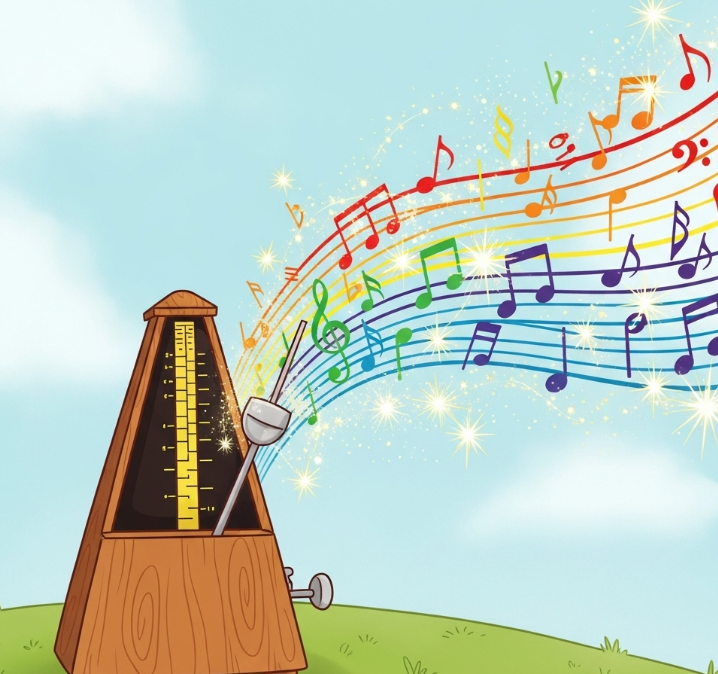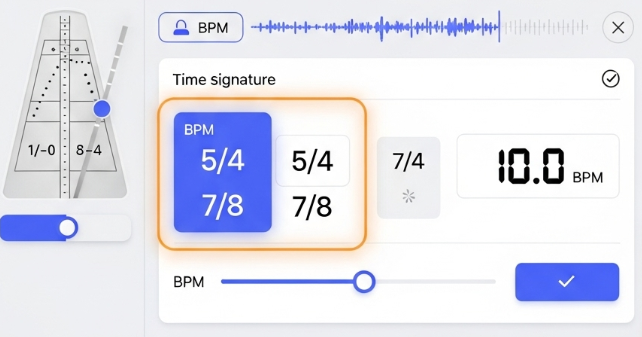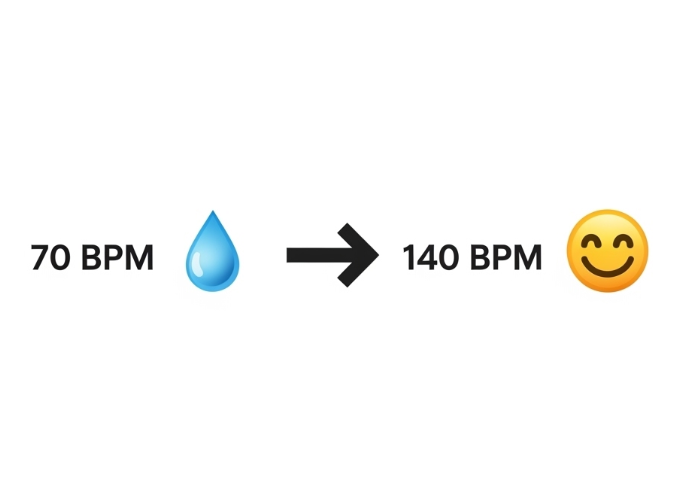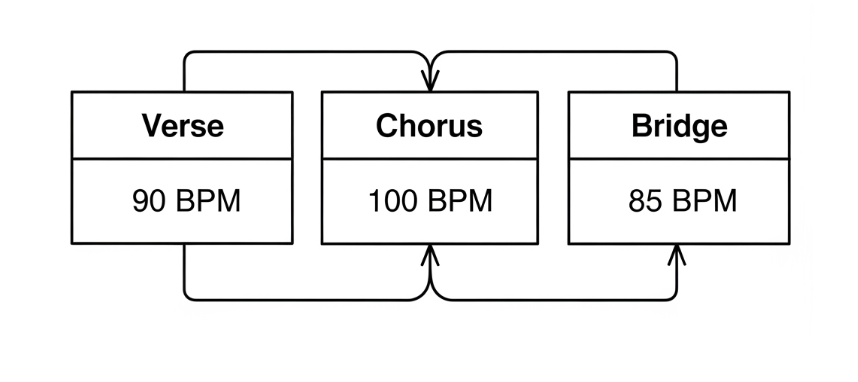Metronome for Songwriting: Spark Creative Rhythm Ideas
Ever wondered how to use a metronome for songwriting beyond just keeping time during practice? Many songwriters overlook the metronome as a powerful tool for sparking creative rhythm and shaping the very foundation of their songs. This guide explores how an online metronome, especially a versatile and free metronome like the one at our free online metronome, can become one of your most valuable music composition tools, helping you define song structure bpm and unlock new melodic and rhythmic pathways.
I. Introduction: The Unsung Hero of Songwriting – Your Trusty Online Metronome
When you think of music composition tools, a metronome might not be the first thing that springs to mind. It's often seen as a rigid practice aid. However, for savvy songwriters, an online metronome is an unsung hero, a secret weapon for tempo experimentation and laying down a solid rhythmic groundwork. Understanding how to use a metronome for songwriting can transform your creative process, helping you move from a fleeting idea to a well-structured song. With a tool like our accessible online metronome, these creative explorations are just a click away.

II. Beyond Keeping Time: How a Metronome Sparks Creative Rhythm in Songwriting
Can an online metronome help with creative rhythm? Absolutely. It’s about shifting your perspective from the metronome as a taskmaster to a creative partner.
Escaping Rhythmic Ruts: Experimenting with New Grooves
Feeling stuck in the same rhythmic patterns? A metronome for songwriting can help you break free. Try setting your online metronome to an unfamiliar tempo or even an unusual time signature. This forces you to think differently about your melodic phrasing and chord changes, often leading to fresh songwriting inspiration and unique beat creation that can help break writer's block.
Finding the "Feel": How Tempo Experimentation Shapes a Song's Mood
The beats per minute (BPM) of a song profoundly affects its emotional impact. Is your ballad feeling a bit rushed, or your upbeat track a little sluggish? Use your online metronome for tempo experimentation. Slowing down or speeding up a song idea by just a few BPM can drastically alter its song tempo and emotion. A free metronome makes this experimentation cost-effective and easy. The emotional impact of bpm is a critical element of songwriting.

Using Our Online Metronome as a Foundational Music Composition Tool
Consider our online metronome one of your primary free songwriting tools. Its simplicity allows you to quickly set a pulse, try out ideas against it, and establish a rhythmic core before you even pick up an instrument or open your DAW. These are valuable simple composition aids.
III. BPM and Song Structure: Setting the Pace for Your Narrative with Your Metronome
How does tempo affect song structure? The song structure bpm is crucial for a song's flow and storytelling.
The Impact of Tempo on Song Energy and Dynamics
Different sections of a song often benefit from subtle or even drastic tempo variations to build energy or create intimacy. For instance, fast tempo songs (or sections) can convey excitement, while slow tempo songs (or sections) can evoke sadness or reflection. An online metronome helps you define and practice these shifts with precision, managing the dynamic range.
Mapping Your Song Structure BPM: Verse, Chorus, Bridge Tempos
Consider the typical song structure bpm:
- Verse BPM: Often sets the main feel and pace.
- Chorus BPM: Might be slightly faster or have a more driving feel to lift the energy.
- Bridge Tempo: Could slow down for introspection or build tension.
Varying tempo in songsections can make your arrangement much more engaging.

Practical Tempo Experimentation Using an Online Metronome for Song Sections
How to find the right tempo for a new song idea? Use your online metronome to loop a short section of your song (e.g., a verse or chorus idea). Experiment by adjusting the tempo up and down in small increments (e.g., 2-5 BPM at a time) until you find best song tempo that perfectly captures the intended emotion and groove. You can try our tool for tempo experimentation right now.
IV. Time Signatures & Creative Rhythm: Exploring Unconventional Paths in Songwriting
Your online metronome isn't just for 4/4! Exploring different time signatures is a fantastic way to generate creative rhythm.
Breaking Free from 4/4: How Different Time Signatures Inspire New Melodies
Many hit songs utilize time signatures other than 4/4. Writing in 3/4 (waltz time) can lend a flowing, romantic feel. Exploring odd time signatures in songs, like 5/4 or 7/8, can lead to unique and memorable rhythmic hooks. This is where songwriting inspiration can truly strike.
Using Your Online Metronome to Understand and Compose in Various Meters
Feeling intimidated by odd time signatures in songs? A metronome for odd meters is your best friend. Set our free metronome to 5/4, for example, and tap out the main pulses (e.g., 1-2-3, 1-2 or 1-2, 1-2-3). This helps you internalize the feel before you even try to write a melody. You can practice different time signatures easily.

Layering Rhythms: Simple Polyrhythmic Ideas for Songwriters
While full-blown polyrhythms can be complex, you can introduce simple polyrhythms in songwriting to add texture. For example, a melody might imply a 3-beat feel over a 4-beat chord progression. Your online metronome can help keep the foundational pulse steady while you experiment with rhythmic layering for songs.
V. Practical Tips: Using Your Online Metronome Effectively in the Songwriting Process
Here are some more how to use metronome for composing tips:
Starting with a Click: Finding Your Initial Song Idea's Pulse
Have a melody foafing in your head? Hum it and use the tap tempo for song ideas feature (like the one on our site, metronome.wiki) to quickly determine its approximate BPM. Then, set your online metronome to that tempo to start developing the idea further.
Recording Ideas to a Metronome: Ensuring Future Flexibility
Always try to make demo recording with metronome clicks. This creates a consistent song demo and makes it infinitely easier for future collaboration, re-recording, or adding programmed elements. It establishes a clear rhythmic feel from the start.
Collaborating with Others: Using a Shared Metronome Reference
When co-writing or working with a band, agreeing on a tempo and using an online metronome (which everyone can access, like our free metronome) ensures everyone is on the same page. This is essential for band practice with metronome and effective co-writing with tempo.
Don't Be Afraid to Ditch the Click (Eventually): When to Trust Your Feel
Should I always use a metronome when writing songs? Not necessarily through the entire process. Use the online metronome to establish structure, experiment, and record demos. But also trust your musical intuition. Sometimes, the best songwriting feel vs metronome decision is to let the music breathe naturally, especially after internalizing rhythm for composing.
VI. Make Your Online Metronome Your Songwriting Superpower
The metronome for songwriting is far more than a timekeeper; it's a versatile music composition tools that can unlock creative rhythm, help define song structure bpm, and push your songwriting inspiration to new heights. By embracing tempo experimentation and utilizing the features of a great online metronome, like the accessible and free metronome at the metronome.wiki website, you can add a new dimension to your creative process.
What are your favorite ways to use a metronome in your songwriting? Share your creative rhythm ideas in the comments below!
VII. Metronome Use in Creative Songwriting
-
What is a good BPM for songwriting?
There's no single "good" BPM; it entirely depends on the mood and style of your song. Use an
online metronomefortempo experimentation. Ballads might be 60-80 BPM, mid-tempo songs 90-120 BPM, and upbeat tracks 120-160+ BPM. Thesong tempo and emotionare closely linked, so try different speeds on our metronome to see what fits. -
Can using a metronome make my songwriting sound too rigid?
It can if used improperly or if you never deviate from it. The key is to use the
metronome for songwritingas a tool for structure and exploration, then allow for naturalrhythmic feel. Many songwriters use it for initialbeat creationand then adjust formusicality. -
How can an online metronome help with writer's block?
When facing
writer's block, changing your rhythmic environment can spark new ideas. Try setting our online metronome to an unusual time signature or a drastically differenttempothan you normally use. This forces you out of your comfort zone and can lead to unexpectedsongwriting inspiration. -
Are there music composition tools online that work well with a metronome?
Many DAWs (Digital Audio Workstations) have built-in metronomes. However, a simple, dedicated
online metronomelike ours at metronome.wiki is excellent for quicktempo experimentationandtap tempo for song ideaswithout opening complex software. It's one of the most fundamentalmusic composition tools online.